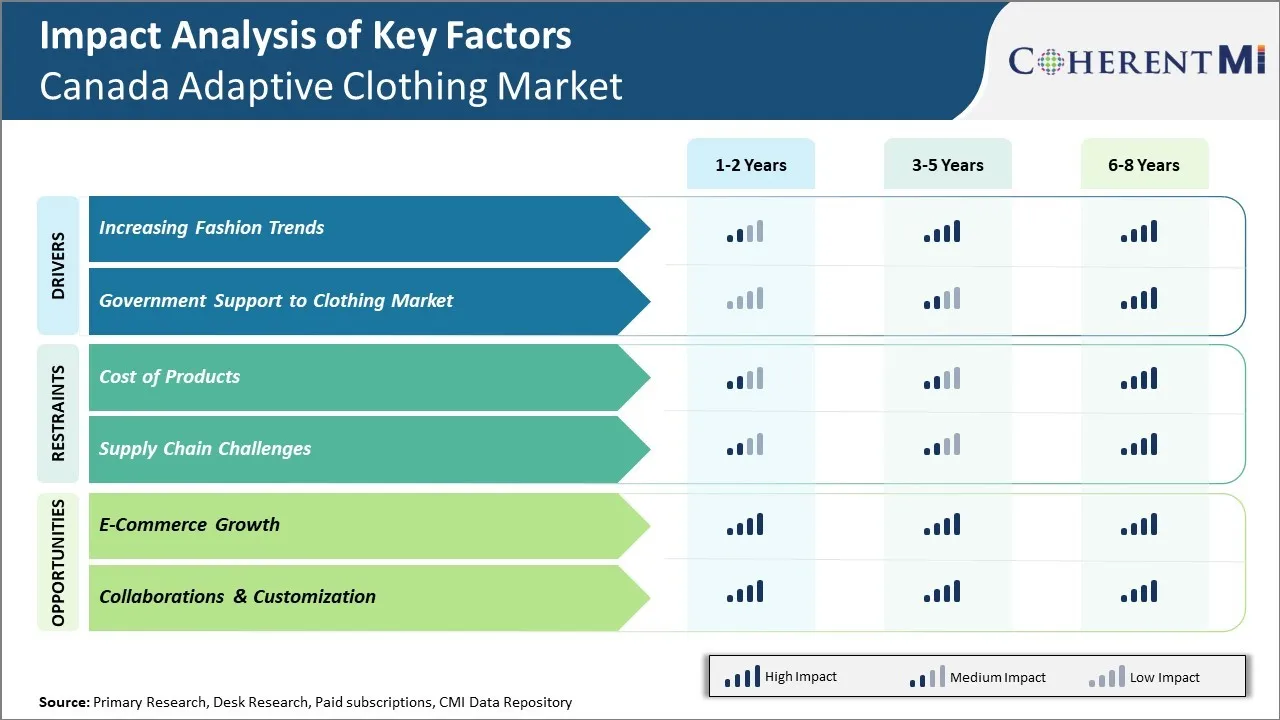Canada Adaptive Clothing Market Trends
Market Driver – Increasing Fashion Trends
The growing social acceptance of adaptive clothing is significantly contributing to the expansion of the Canada adaptive clothing market. There is a rising trend of adopting inclusive fashion among both individuals with disabilities as well as mainstream customers. More people are realizing that adaptive clothing allows everybody to express themselves through fashion irrespective of their physical abilities. Adaptive clothing designs are becoming gradually popular as they solve practical problems without compromising on style. Their versatility in accommodating varied needs through options like magnetic closures, front zippers and expandable waistbands ensures comfort and independence to the users.
This shift in perception has especially been driven by prominent advocates on social and digital media who have normalizing the images of people with disabilities enjoying all aspects of life including fashion. For instance, popular bloggers and influencers openly shared their experiences of finding suitable yet trendy adaptive clothing options through their social media platforms. Their inspiring stories brought more awareness about importance of inclusive clothing designs that are accessible for people across abilities to join fashion conversations and develop their personal style.
Market Driver – Government Support to Clothing Market
The Canadian government has recognized the need for inclusive policies that support persons with disabilities. In recent years, there has been a strong push to make publicly funded programs and services more accessible for all. One key area of focus has been increasing support for adaptive clothing and equipment. In 2021, Employment and Social Development Canada committed $2 million over two years to expand the range of adaptive clothing available. This included funding for retailers to develop new lines and support manufacturing of clothing tailored to individuals' specific needs.
This new government backing has been instrumental in spurring more innovation and choice within the adaptive clothing sector in Canada. Retailers that received funding have launched new collections with customizable features like easily adjusted hems, snap closures for dressing, and fabrics tailored for sensory sensitivities. Having more options that focus on comfort and practicality is empowering more people with disabilities to express their personal style.
According to data from March of Dimes Canada, 41% of adults with disabilities reported that access to appropriate clothing was a challenge in 2021.

Market Challenge – Cost of Products
The cost of producing adaptive clothing can pose a challenge to growth in Canada. Developing adaptive clothing that meets the specific needs of individuals with disabilities often involves more specialized design and materials compared to mainstream clothing. Features like accommodated zippers, Velcro closures, strategically placed seams, and customized sizing take additional time, materials and engineering to incorporate. This added layer of customization is reflected in the price of adaptive clothing, which on average is estimated to be 20-30% higher than conventional clothing.
For many living with disabilities or chronic health conditions in Canada, these specialized clothing options remain out of financial reach. High costs can negatively impact regular maintenance and updates of adaptive wardrobes, leaving some to make do with ill-fitting or outdated pieces that compromise independence, comfort and dignity.
Price barriers also limit market scale. Data from Statistics Canada showed that in 2021, 1 in 5 Canadians aged 15 years and over reported having a disability, representing over 3 million people nationwide. However, the scale and spending power of the overall adaptive clothing customer base has not grown accordingly.
Market Opportunity – E-commerce Growth
The adaptive clothing market in Canada has been growing steadily to meet the needs of an aging population as well as rising prevalence of various disabilities. As physical restrictions increase for many consumers, easily accessible adaptive apparel allows them to dress independently with comfort and dignity. E-commerce provides a convenient shopping option that addresses the barriers faced by this community to access specialized products. With more Canadians now embracing online shopping across categories due to the pandemic, there is potential to reach a much wider segment of adaptive clothing buyers through digital platforms. Companies who establish an innovative E-commerce model can tap into this market opportunity by catering to the privacy and customization needs of consumers.
Online retailers can curate extensive and well-organized product collections, along with detailed sizing and fit information to help consumers make the right selection from home. Interactive features like 360-degree views, video tutorials and chat support would enhance the shopping experience. Contactless delivery options further improve accessibility. According to Statistics Canada projection figures from 2020, the proportion of Canadians aged 65 and above is expected to rise significantly over the next two decades.